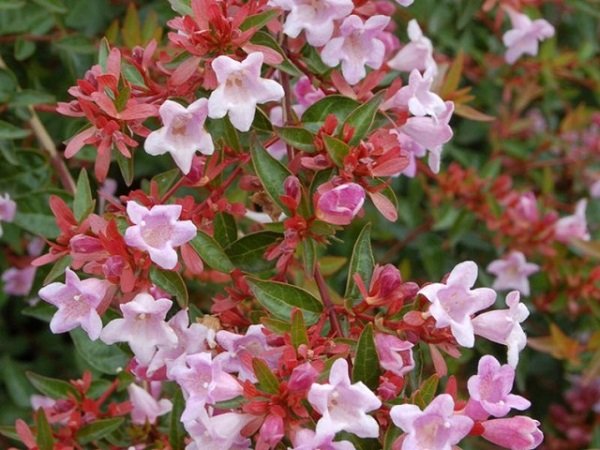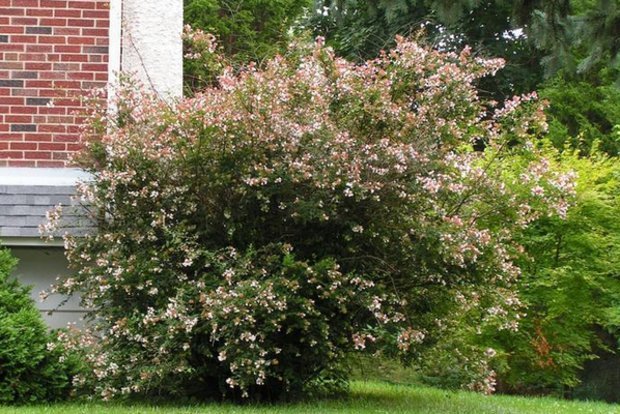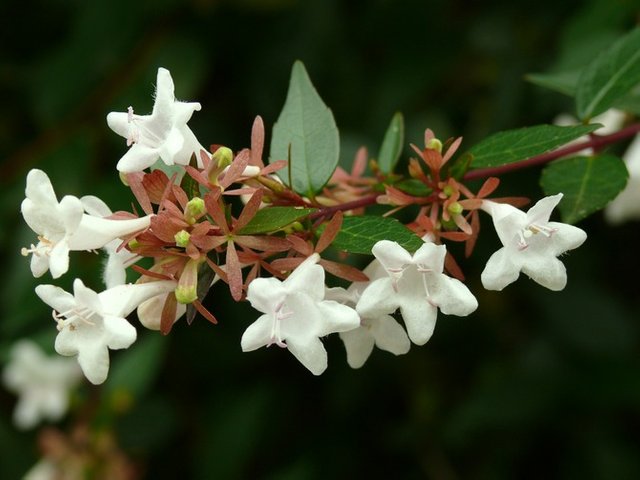Abelia is a decorative shrub and is very suitable for growing in the garden!
Abelia - deciduous or evergreen, slowly growing ornamental shrub in height 1,5-2,5 m, under favorable growing conditions can reach a six-meter mark. Leaves opposite, pointed at the ends, oval in shape, dark green in color with shine, are located in pairs.
Flowers tubular, campanulate or funnel-shaped, small or medium-sized, five-lobed, have a pleasant and brightly-expressed odor, can be white, pink, lilac or red. Flowering runs from June to September, some species bloom until October. At the end of flowering, leaves densely located at the tips of branches fall off, and in their place remain reddish or purple sepals, due to which the plants retain their decorative qualities until the onset of stable frosts.

Growing conditions
Abelia - the plant photophilous, gives preference to well-lit areas. In a hot climate accepts slightly shaded areas, protected from the northern winds. To grow a culture, well-drained, moderately moist soils with a rich mineral composition are desirable.

Care
Abelia is an undemanding plant, taking care of it does not take much time and is subject to even a novice amateur gardener. The main tasks in the care of plants are forming and sanitary pruning. To maintain aesthetic views of the bush immediately after flowering, old, diseased and damaged branches should be removed. A special form of abelia can be given by shearing, however, it will be necessary to perform such a procedure quite often, since the plants grow very quickly.
In arid periods, the Abelians need moderate watering, with sufficient amount of natural precipitation the culture of irrigation does not require. Top dressing with mineral fertilizers is carried out in early spring. Since the Abelians are cold-resistant, there is no need for shelter for the winter.
An equally important procedure for caring for plants is the fight against the parents and diseases. Often, Abelians are attacked by aphids, the pest leaves saccharous discharge on the leaves, which subsequently lead to their blackening. To combat diseases and diseases it is recommended to use permitted insecticidal drugs. Thank you @ctrl-alt-nwo
